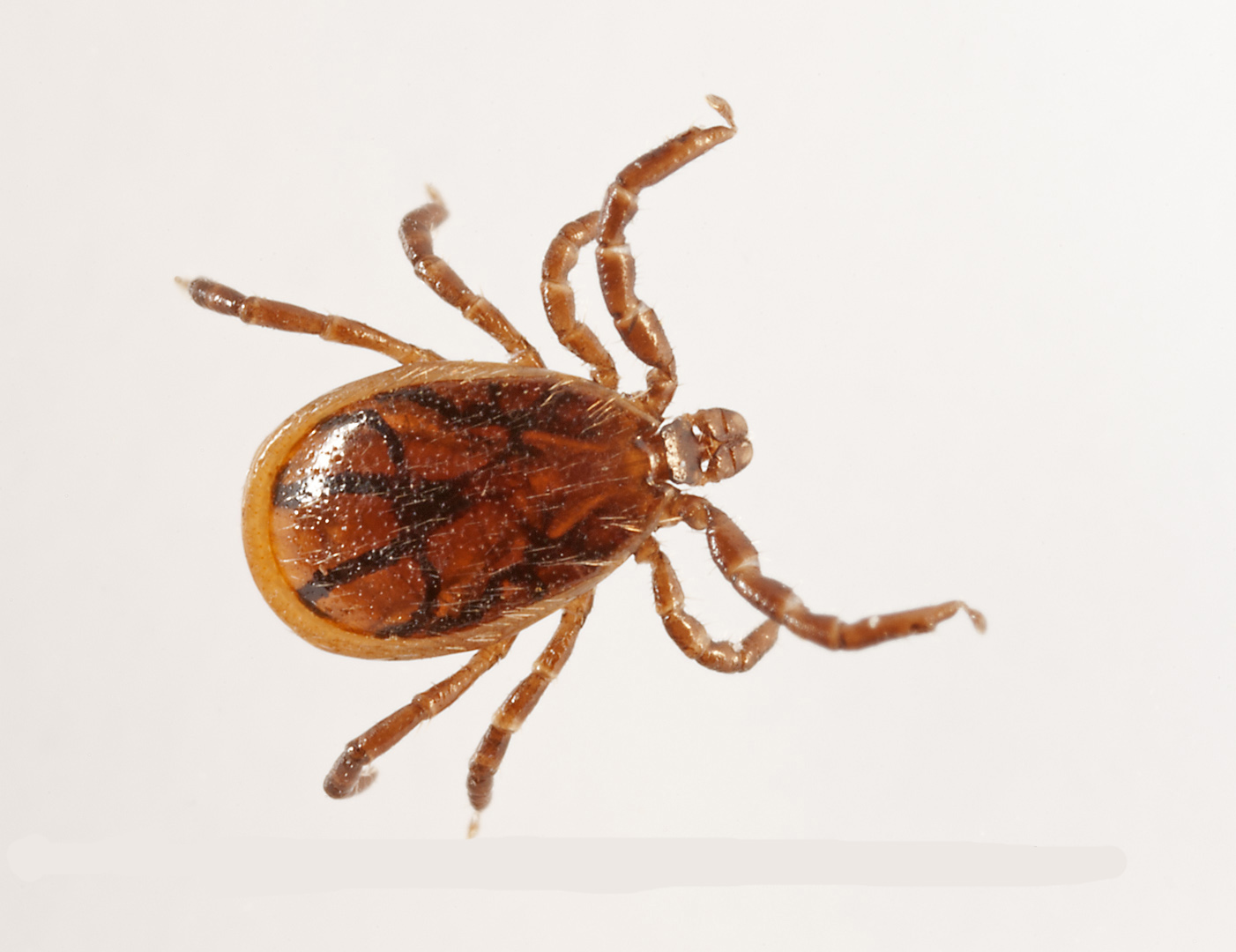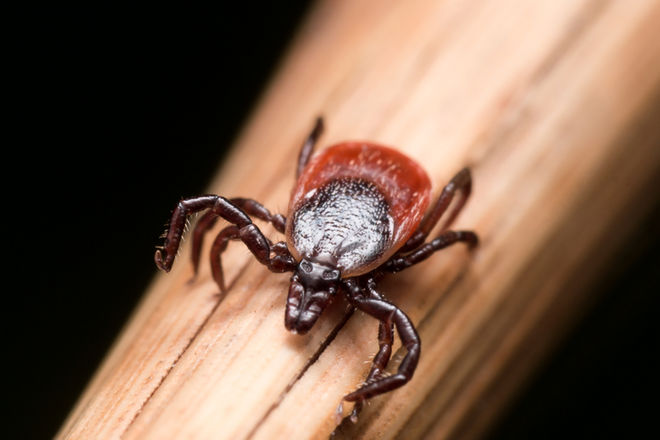
Ticks are bloodsucking parasites. There are many tick species in Australia though the most common species that attacks humans.

This tick is mostly found along a narrow coastal strip between the Great Dividing Range and the coast, which in some areas extends inland up to 75 km. As the majority of the human population also lives along the coast encounters with this tick can be frequent.
Ticks have four distinct stages of development: egg – larva – nymph – adult. Larvae, nymphs and adult females must have a blood meal from a host. After the blood meal larvae and nymphs drop off the host and rest in the environment as they develop into the next stage; adult females drop off the host and lay eggs. The whole cycle usually takes about a year.
are caused by bacteria belonging to the Rickettsia family. In Australia the two types of spotted fevers are Queensland Tick Typhus, which occurs along the coastal strip of eastern Australia from North Queensland to Victoria, and Flinders Island Spotted Fever, which occurs mainly in Flinders Island in Bass Strait, Tasmania and Victoria. Symptoms of the Spotted Fevers include fever, headache, joint and muscle pains, tenderness of lymph nodes and, usually, a rash characterised by spots. At the site of the bite there may be redness and swelling and a thick black scab (eschar). Clinical diagnosis is confirmed by specific blood tests. Rickettsial infections can be treated with antibiotics. Serious illness resulting in death is very rare.
Lyme disease is caused by a bacterium and has become the most common tick borne disease in the world. While there is little evidence that Lyme disease is caused by Australian ticks, there may be other germs carried by Australian ticks which can cause an infection similar to Lyme disease. Lyme disease is more likely to affect travellers when participating in outdoor activities in tick-infested areas where Lyme disease is known to occur. Lyme disease causes a range of non-specific symptoms including fever, fatigue, headaches, myalgia, arthralgia, muscle and joint pain and sore and swollen lymph glands. These symptoms can occur within days, weeks or months of being bitten. A characteristic skin lesion, erythema migrans, may also appear within 3 to 30 days at the site of the tick bite. Lyme disease can be treated with antibiotics.



If we look at pricing holistically, we'll create a more solid business.
Services Frequency
1 Exterior Services
1 Interior Services
Free Call Back
Bees, Ground Ants, Spiders, Bugs, Pill Bugs, Rats.
Services Frequency
2 Exterior Services
2 Interior Services
Free Call Back
Bees, Ground Ants, Spiders, Bugs, Pill Bugs, Rats.
Services Frequency
Three Exterior Services
Three Interior Services
Free Call Back
Bees, Ground Ants, Spiders, Bugs, Pill Bugs, Rats.